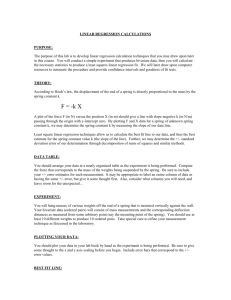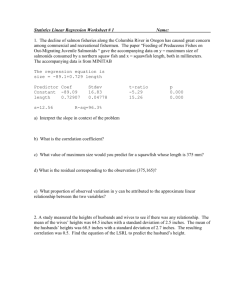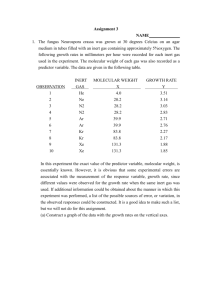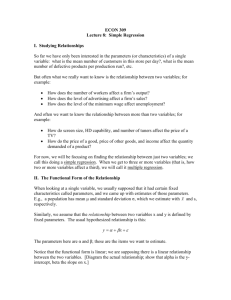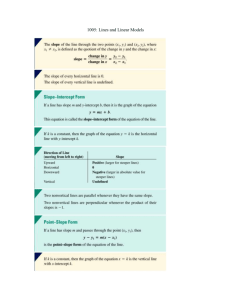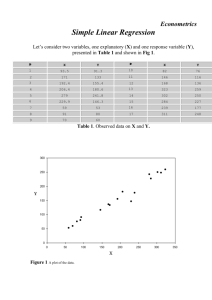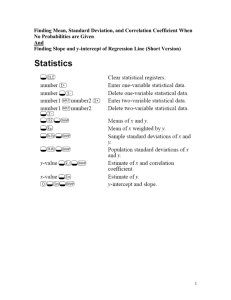SIMPLE REGRESSION QUIZ
advertisement
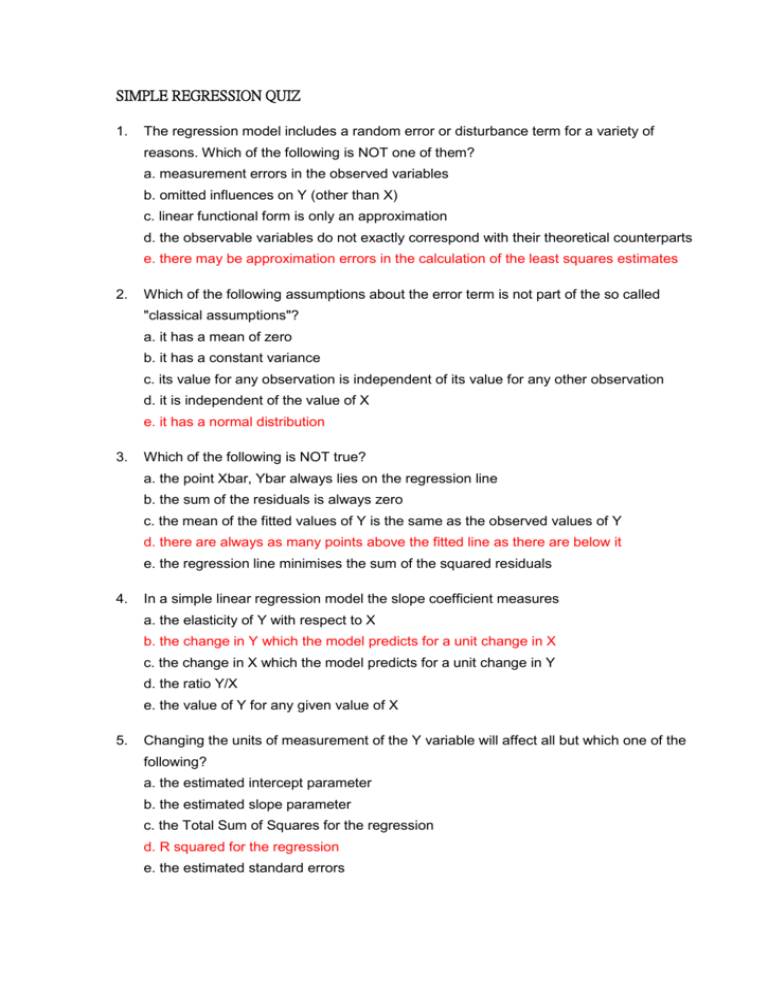
SIMPLE REGRESSION QUIZ 1. The regression model includes a random error or disturbance term for a variety of reasons. Which of the following is NOT one of them? a. measurement errors in the observed variables b. omitted influences on Y (other than X) c. linear functional form is only an approximation d. the observable variables do not exactly correspond with their theoretical counterparts e. there may be approximation errors in the calculation of the least squares estimates 2. Which of the following assumptions about the error term is not part of the so called "classical assumptions"? a. it has a mean of zero b. it has a constant variance c. its value for any observation is independent of its value for any other observation d. it is independent of the value of X e. it has a normal distribution 3. Which of the following is NOT true? a. the point Xbar, Ybar always lies on the regression line b. the sum of the residuals is always zero c. the mean of the fitted values of Y is the same as the observed values of Y d. there are always as many points above the fitted line as there are below it e. the regression line minimises the sum of the squared residuals 4. In a simple linear regression model the slope coefficient measures a. the elasticity of Y with respect to X b. the change in Y which the model predicts for a unit change in X c. the change in X which the model predicts for a unit change in Y d. the ratio Y/X e. the value of Y for any given value of X 5. Changing the units of measurement of the Y variable will affect all but which one of the following? a. the estimated intercept parameter b. the estimated slope parameter c. the Total Sum of Squares for the regression d. R squared for the regression e. the estimated standard errors 6. A fitted regression equation is given by Yhat = 20 + 0.75X. What is the value of the residual at the point X=100, Y=90? a. 5 b. -5 c. 0 d. 15 e. -5 7. What is the number of degrees of freedom for a simple bivariate linear regression with 20 observations? a. 20 b. 22 c. 18 d. 2 8. R squared measures a. the correlation between X and Y b. the amount of variation in Y c. the covariance between X and Y d. the residual sum of squares as a proportion of the Total Sum of Squares e. the explained sum of squares as a proportion of the Total Sum of Squares 9. One tailed tests are sometimes used to test hypotheses about regression coefficients. In which of the following circumstances? a. when the estimated coefficient has the sign predicted by theory b. when you wish to use a larger significance level than 5% c. when the sample size is large enough to use the normal approximation to the t distribution d. when the etsimated coefficient has the opposite sign to that predicted by theory e. when you are testing a hypothesis other than that the parameter equals zero 10. The least squares etimator of the slope coefficient is unbiased means a. the estimated slope coefficient will always be equal to the true parameter value b. the estimated slope coefficient will get closer to the true parameter value as the size of the sample increases c. the estimated slope coefficient will be equal to the true parameter if the sample is large d. the mean of the sampling distribution of the slope parameter is zero e. if repeated samples of the same size are taken, on average their value will be equal to the true parameter
